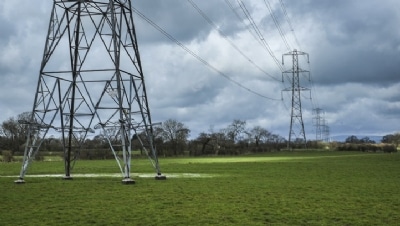National Grid exploring the potential of Artificial Intelligence to optimise renewables
- by 7wData

The National Grid has confirmed that it is in the "earliest stages" of discussions exploring the use of Artificial Intelligence (AI), which could potentially maximise the use of renewable energy by predicting peaks in demand across the UK.
The National Grid, which operates and owns the infrastructure that transports electricity across the UK, has seen its ability in balancing and stabilising the grid challenged in recent years as intermittent renewables such as solar and wind have been fed into the energy mix.
While the introduction of renewables into the mix forms a key role in both national and European legislation to decarbonise the grid, concerns have been raised as to the National Grid’s ability to deal with fluctuating wind and solar resources, which can sometimes produce more energy than the system can cope with.
Energy storage and demand response initiatives, whereby businesses either store surplus energy or increase or reduce energy consumption based on demand, are being incorporated by the National Grid, which is now “exploring what opportunities” AI could offer to balance the situation.
The National Grid revealed that it is in discussions with the UK-based AI company DeepMind about introducing new technologies to help balance the grid and improve the use of renewables. DeepMind technology has already been used in Google’s data centres to cut energy by 40%.
“We are always excited to look at how the latest advances in technology can bring improvements in our performance, ensure we are making the best use of renewable energy, and help save money for bill payers,” a spokesperson for National Grid said.
“We are in the very early stages of looking at the potential of working with DeepMind and exploring what opportunities they could offer for us.”
DeepMind’s machine learning algorithms are able to predict the temperature and pressure outputs within data centres 60 minutes in advance, and the company has suggested that the technology could accurately predict demand patterns in the UK.
The National Grid had to battle with fluctuating demands last summer, when it anticipated that electricity demand would hit a record low of around 35.
[Social9_Share class=”s9-widget-wrapper”]
Upcoming Events
Shift Difficult Problems Left with Graph Analysis on Streaming Data
29 April 2024
12 PM ET – 1 PM ET
Read MoreYou Might Be Interested In
Facebook AI Research Is A Game-Changer
18 Jan, 2021For decades, computer programmers have been trying to beat multiplayer games by finding reliable patterns in data. Researchers at Facebook and …
What would make you trust a robot?
1 Jan, 2020People don’t trust self-driving cars. They trust themselves to drive. Yes, a robot doesn’t fall asleep or get drunk or …
What AI can teach us about human bias in decision making
25 Oct, 2022The debate between meritocracy and affirmative action has long simmered, and the arguments on both sides are familiar. But quickly …
Recent Jobs
Do You Want to Share Your Story?
Bring your insights on Data, Visualization, Innovation or Business Agility to our community. Let them learn from your experience.
Privacy Overview
Get the 3 STEPS
To Drive Analytics Adoption
And manage change




